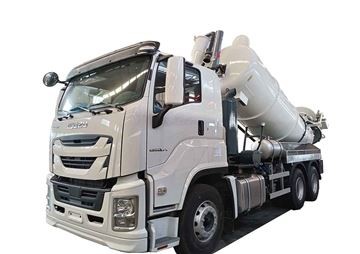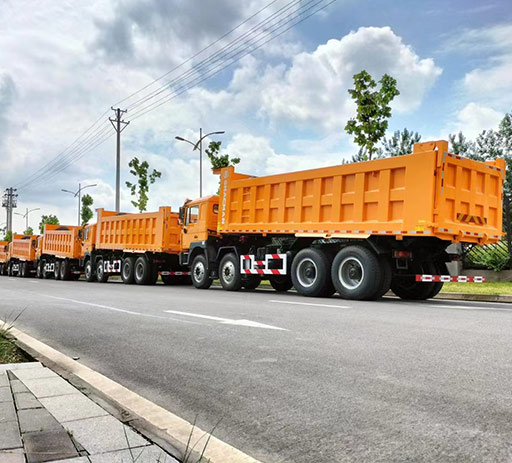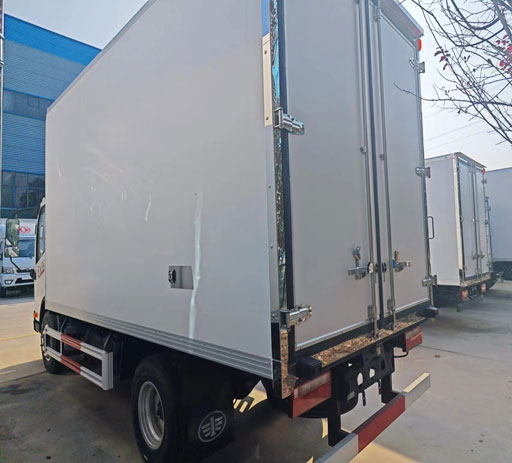How Does a Trash Truck Work: A Comprehensive Guide

Trash trucks play a crucial role in keeping our cities clean and waste-free. They are specialized vehicles designed to collect and transport waste materials to disposal sites. In this article, we will delve deep into the workings of a trash truck, exploring everything from its components and operation to the types available and best practices for waste collection.
Understanding Trash Truck Basics
What is a Trash Truck?
A trash truck, also known as a garbage truck or waste collection vehicle, is a heavy-duty vehicle designed specifically for collecting, transporting, and disposing of waste materials. They are often seen making their rounds in neighborhoods, picking up residential and commercial waste.
The Importance of Trash Trucks
Trash trucks are a vital component of urban sanitation systems. They ensure that waste is collected and disposed of properly, contributing to public health and environmental well-being. Without these vehicles, cities would quickly become overwhelmed with trash, leading to health hazards and pollution.

The Anatomy of a Trash Truck
Main Components of a Trash Truck
| Component | Description |
|---|---|
| Chassis | The sturdy framework that supports the truck |
| Body | The compartment where garbage is collected |
| Compactor | A mechanism that compresses garbage to maximize space |
| Loading Mechanism | System used to load trash into the truck |
| Hydraulic System | Controls the lifting and loading of waste |
| Control Cab | The compartment where the driver operates the vehicle |
How Each Component Works
Chassis
The chassis is the base frame of the trash truck. It is constructed to support heavy loads and withstand various driving conditions. Most trash trucks utilize a heavy-duty design to ensure durability.

Body
The body of the truck is often made from reinforced steel or aluminum to resist wear and tear. This compartment is where waste is stored during collection.
Compactor
It’s essential for trash trucks to have compactors to maximize loading capacity. The compactor compresses the waste, allowing the truck to hold more garbage without needing to make frequent trips.
Loading Mechanism
Modern trash trucks come equipped with various loading mechanisms, like automated arms that lift bins and dump contents into the truck. These systems reduce the need for manual labor and enhance efficiency.
Hydraulic System
The hydraulic system is crucial for operating the compactor and automated loading mechanisms. It uses pressurized fluid to power the lifting and dumping actions efficiently.
Control Cab
The control cab is where the driver controls the truck’s operations. It is equipped with controls for the compactor, loading mechanism, and other essential functions.
Types of Trash Trucks
Rear Loader
Rear loader trash trucks have an opening at the back for loading waste manually or using an automated system. They are commonly used in residential areas for their maneuverability.
Side Loader
Side loader trucks feature an arm on the side to pick up waste bins. This type is efficient for neighborhoods with high volumes of waste, allowing for one-person operations.
Front Loader
Used primarily for commercial waste collection, front loader trucks have two forks to lift and dump large dumpsters. They are often used in businesses due to their ability to handle larger quantities of waste.
How Trash Trucks Operate
The Collection Process
The operation of a trash truck starts with the collection process:
- The driver navigates to designated collection points.
- In rear and side loader trucks, the loading mechanism engages to lift bins.
- Waste is dumped into the truck body, where it is compacted.
- The driver moves to the next collection point.
Disposal of Collected Waste
Once the truck’s capacity is full, the driver transports the waste to a landfill or a waste processing facility. This facility may sort, recycle, or process the waste for energy recovery, depending on local regulations.
Best Practices for Waste Collection
Tips for Residents
- Place garbage bins at the curb the night before collection.
- Ensure bins are closed to prevent littering.
- Use clear bags for recyclables to assist collection.
- Follow local guidelines for electronic waste and hazardous materials.
Safety Measures for Operators
- Wear appropriate safety gear, including gloves and reflective clothing.
- Check blind spots before moving the truck.
- Monitor the vehicle’s hydraulic systems for any leaks or issues.
- Maintain regular inspections of the vehicle for safety compliance.
Environmental Impact of Trash Trucks
Reducing Emissions
Many municipalities are adopting eco-friendly trash trucks that run on compressed natural gas (CNG) or electricity. These options significantly reduce harmful emissions compared to traditional diesel-powered trucks.
Recycling Initiatives
Trash trucks also play a role in recycling initiatives. By efficiently collecting recyclable materials, communities can promote sustainable waste management practices and reduce landfill waste.
Innovations in Trash Truck Technology
Smart Waste Collection Systems
Technological advancements have led to smart waste management systems integrated with GPS and IoT (Internet of Things) sensors. These systems help optimize routes and monitor bin fullness, reducing fuel consumption and enhancing efficiency.
Automated Vehicles
The future of trash collection may include automated and self-driving trash trucks. These vehicles can operate independently, performing collections efficiently while reducing the risk of accidents due to human error.
Challenges Faced by Trash Truck Operators
Traffic and Accessibility Issues
Trash truck operators often navigate busy streets and tight spaces. Traffic congestion can delay collections and increase operational costs. Additionally, accessibility in certain areas can pose challenges.
Public Perception and Engagement
Community engagement is critical in promoting proper waste disposal and recycling practices. Many residents may not fully understand the importance of waste management, leading to complications in collection.
FAQ Section
What types of waste can trash trucks collect?
Trash trucks generally collect household waste, yard waste, and some recyclables. However, hazardous materials and electronics often require special handling and cannot be disposed of in regular trash trucks.
How often do trash trucks collect waste?
Collection frequency varies by location. Most residential areas experience weekly pickup, whereas commercial locations may require more frequent services, often bi-weekly or even daily.

Why are some waste trucks automated?
Automated trash trucks are designed to improve efficiency, reduce labor costs, and enhance safety by minimizing the need for workers to lift heavy bins manually.
What are the benefits of composting organic waste?
Composting organic waste reduces the amount of garbage sent to landfills, enriches soil quality, and minimizes greenhouse gas emissions from decomposing waste.
Is recycling mandatory?
Recycling laws vary by region. In many areas, recycling is encouraged and may be mandatory, while other locations offer it as a voluntary option.
How can I reduce waste at home?
To reduce waste, consider practicing mindful consumption, using reusable bags, and recycling whenever possible. Composting yard and kitchen waste is another effective strategy.
